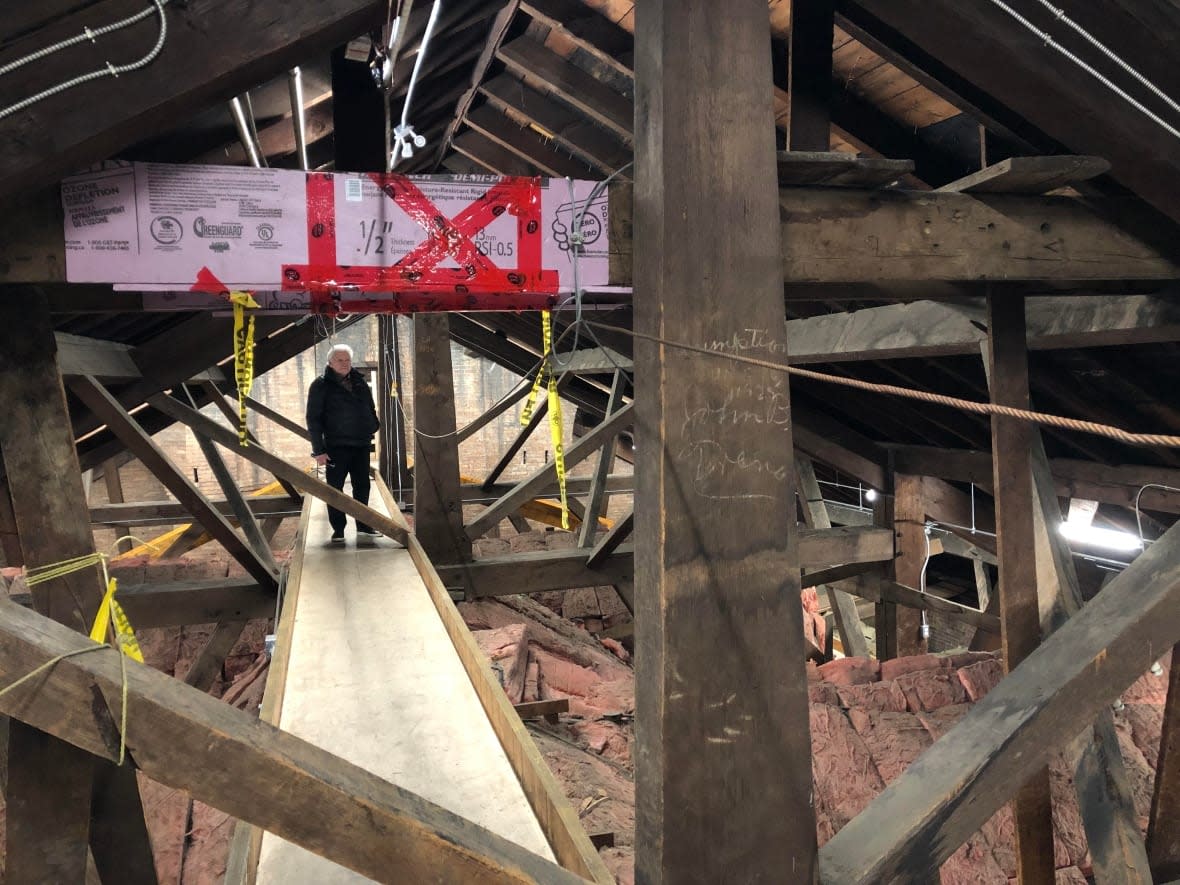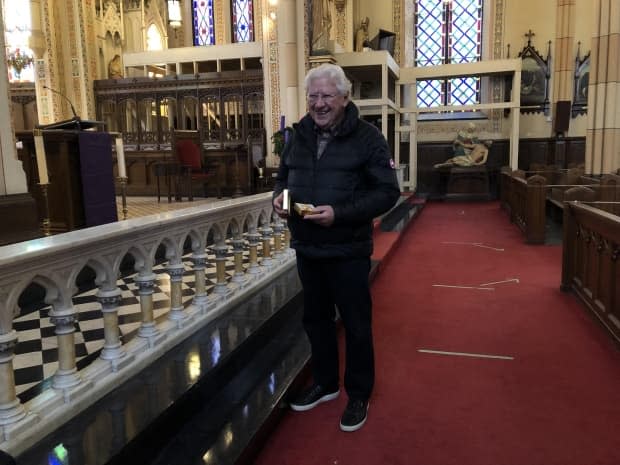Assumption church no longer 'endangered'

Assumption Church has been saved. The church, which was built in 1848, been taken off the National Trust of Canada's list of the top ten most endangered heritage buildings in Canada.
Restoration crews are now in Phase 2 of the project to save the historic building. The focus is now on the interior of the church. So far the east side of the sanctuary is finished, the ceiling on the west side now needs to be completed.
The team simplified the patterns on the walls and columns to help bring more attention to the more intricate artwork around the church.

Paul Mullins is leading the restoration project. He said community members have helped raise millions of dollars to make essential repairs on the building.
"But the expensive part comes when we start doing the masonry and brick work on the outside, and that's going to be millions as well. But because of the condition of the church, because of the work that's already been done with the new roof, in particular in the new heating system, then we have whatever time it will take to be able to get that part of the work done," said Mullins.
Fundraising efforts had slowed down briefly as news came out about thousands of unmarked graves recovered at Catholic church-run residential schools across Canada.
At that point, Assumption Church had already wrapped up the first phase of the restoration project focused on stabilizing the structure.

Tony Pupatello, the project manager of the restoration team working at the church. He said this is the largest, most historical project his company has ever worked on. Finding the paint, stenciling, and other materials to work well with the building have been difficult.
"That's been kind of a challenge, not struggle, but it's part of the process for a project like this,"said Pupatello."The longer I'm on this project, the more knowledge and more facts I'm learning."
Fundraising is already underway for the next part of the project. The work will begin just after Christmas if at least half of the $600,000 needed to complete that phase is raised. If not, work will continue after Easter.
The parish itself dates back to 1728. The church hopes to have the work complete in time for it's 300th anniversary in 2028.


